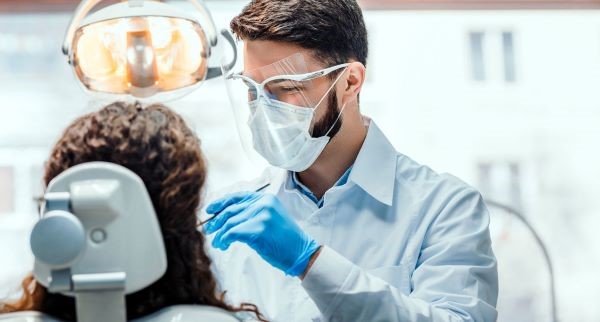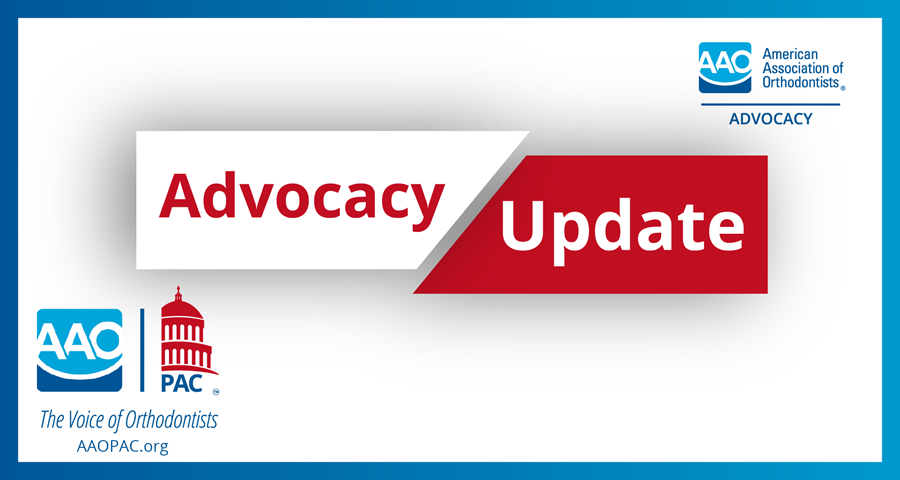The Commission on Dental Accreditation (CODA) recently published updated Orthodontics and Dentofacial Orthopedics Standards for accreditation of orthodontic residency programs. CODA’s mission is to serve the public and profession by developing and implementing accreditation standards that promote and monitor the continuous quality and improvement of dental education programs.
Eight AAO committee members (see below) including three representatives of the Council on Education, three members from the Society of Educators, one American Board of Orthodontics representative and one Board of Trustees representative, conducted a comprehensive study of the existing six CODA Standards for Orthodontic and Dentofacial Orthopedics. The committee recommended standard changes to the accrediting commission with the intent that all U.S. programs provide a high quality of education for their residents.
The AAO committee was initiated in 2017 with direction from a Board of Trustees motion, calling for the president to appoint a committee charged with comprehensive review of CODA standards applicable to orthodontic programs. Serving on the committee were Drs. Jeffrey Godel, Onur Kadioglu, Tom Kluemper, Glenn Sameshima, Kelton Stewart, Larry Tadlock and Richard Williams. Dr. Steven Siegel, AAO trustee from the Middle Atlantic Society of Orthodontists (MASO), chaired the committee.
“The updated CODA standards will help ensure that accredited advanced orthodontic education programs maintain a high standard of excellence and that orthodontists continue to provide expert care to our patients and the public,” said Dr. Siegel, chair of the review committee and the AAO trustee from the Middle Atlantic Society of Orthodontists (MASO).
The six CODA Standards are:
STANDARD 1 – INSTITUTIONAL COMMITMENT/PROGRAM EFFECTIVENESS
STANDARD 2 – PROGRAM DIRECTOR AND TEACHING STAFF
STANDARD 3 – FACILITIES AND RESOURCES
STANDARD 4 – CURRICULUM AND PROGRAM DURATION
STANDARD 5 – ADVANCED EDUCATION STUDENTS/RESIDENTS ELIGIBILITY AND SELECTION
STANDARD 6 – RESEARCH
Areas addressed in the updated CODA standards for orthodontic residencies include program director requirements, faculty to student/resident ratio, clinic supervision, clinical facilities, required competencies, outcomes assessment and training of CODA accreditation site visitors. A detailed summary appears below.
CODA Standard Updates
During the standards review, the AAO committee enlisted input from a wide range of orthodontic educators including members of the Society of Educators, American Board of Orthodontists, Council on Scientific Affairs, Council on Education, and the Board of Trustees.
The AAO submitted a series of recommended changes to the CODA Standards for Orthodontic and Dentofacial Orthopedics, which then went through an arduous review process by CODA with input from communities of interest. As a result, the following changes were adopted, effective July 2022.
Program Director and Faculty Updates:
● In addition to the program being administered by one director who is board certified, Standard 2.2 now states that the program director position must be full-time as defined by the institution.
● Previously, the Standard did not have any specific requirements regarding the number of faculty to student/resident ratio. New requirements include:
– The program must ensure a minimum of one (1) full time equivalent (FTE) faculty to four (4) students/residents for the entire program, including clinical, didactic, administration, and research components. (Standard 2-9)
– For clinic coverage, the program must ensure no less than one (1) faculty to eight (8) students/residents to assure the number and time commitment of faculty is sufficient to provide full supervision of the clinical portion of the program. (Standard 2-10)
– The faculty covering clinic must be orthodontists. (Standard 2-11)
Clinical Facilities Updates:
A critical part of a quality advanced education program in orthodontics is hands on experience. We owe it to our residents and to the public that each resident has adequate access to the resources needed to provide patient care and receive proper clinical training.
Standard 3-1 now requires that adequate space must be designated specifically for the advanced dental education program in orthodontics and dentofacial orthopedics. For each clinic session to which a student/resident is assigned, the program must provide a minimum of one (1) clinic chair per student/resident.
Updates to Required Competencies:
The AAO committee recommended the addition of several required competencies to Standard 4-3.4 (p and q) including:
– Identify patients with sleep-related breathing disorders/sleep apnea;
– Identify patients with Craniofacial Anomalies and Cleft Lip and Palate;
The committee had extensive discussion on types of orthodontic cases and whether there should be a requirement in the minimum number and types of treated cases. The areas of consensus were in the following two recommendations which were felt to be a crucial part of an advanced orthodontic education and were adopted by CODA (Standard 4-3.4, r and s):
– Treat and effectively manage malocclusions that require four (4) quadrants of bicuspid extractions or of comparable space closure;
– Treat and effectively manage Class II malocclusions, defined as a bilateral end-on or greater Class II molar or a unilateral full cusp Class II molar, through a non-surgical treatment approach.
Outcomes Assessment Updates:
The AAO committee recommended strengthening clinical outcomes assessments. Examples of evidence to demonstrate compliance that are included in Standard 4 are the use of: American Board of Orthodontics Assessment Tools: Discrepancy Index, Cast-Radiograph Evaluation and, Case Management Forms.
Site Visitor Training:
As important as the Accreditation Standards are, site visits are equally important to ensure that all accredited programs are in compliance with the Standards. The committee recommended making the two-day formal workshop a mandatory requirement for site visitor training and this is now reflected in CODA’s Evaluation and Operational Policies and Procedures Manual.
Updates to the Policy Statement on Site Visitor Training, from the Evaluation and Operational Policies and Procedures Manual include::
● New site visitors must attend a two-day formal workshop that follows the format of an actual site visit.
● All new site visitors are directed to the Commission’s on-line training program and are required to successfully complete the training program and site visitor final assessment.
● Site visitor update sessions take place at several dental-related meetings, such as the annual session of the American Dental Education Association (ADEA), the American Association of Oral and Maxillofacial Surgeons and the ADEA Allied Dental Program Directors’ Conference.
The Evaluation and Operational Policies and Procedures Manual stipulates that the Commission may entertain requests from other organizations to provide site visitor update sessions, however, the primary purpose of the update sessions is to inform site visitors about recent Commission activities, revisions to standards and newly adopted policies and procedures. The AAO Council on Education is now determining if the AAO should request to sponsor an orthodontic specific site visitor update session.
It should be noted that CODA does not consider the number of programs, workplace needs or other factors beyond compliance with the Standards when granting accreditation. The AAO will continue to periodically review all Standards related to orthodontics to assist CODA in fulfilling its mission, and ensure that our residents receive the best orthodontic education possible.
View the Updated CODA Orthodontics and Dentofacial Orthopedics Standards



